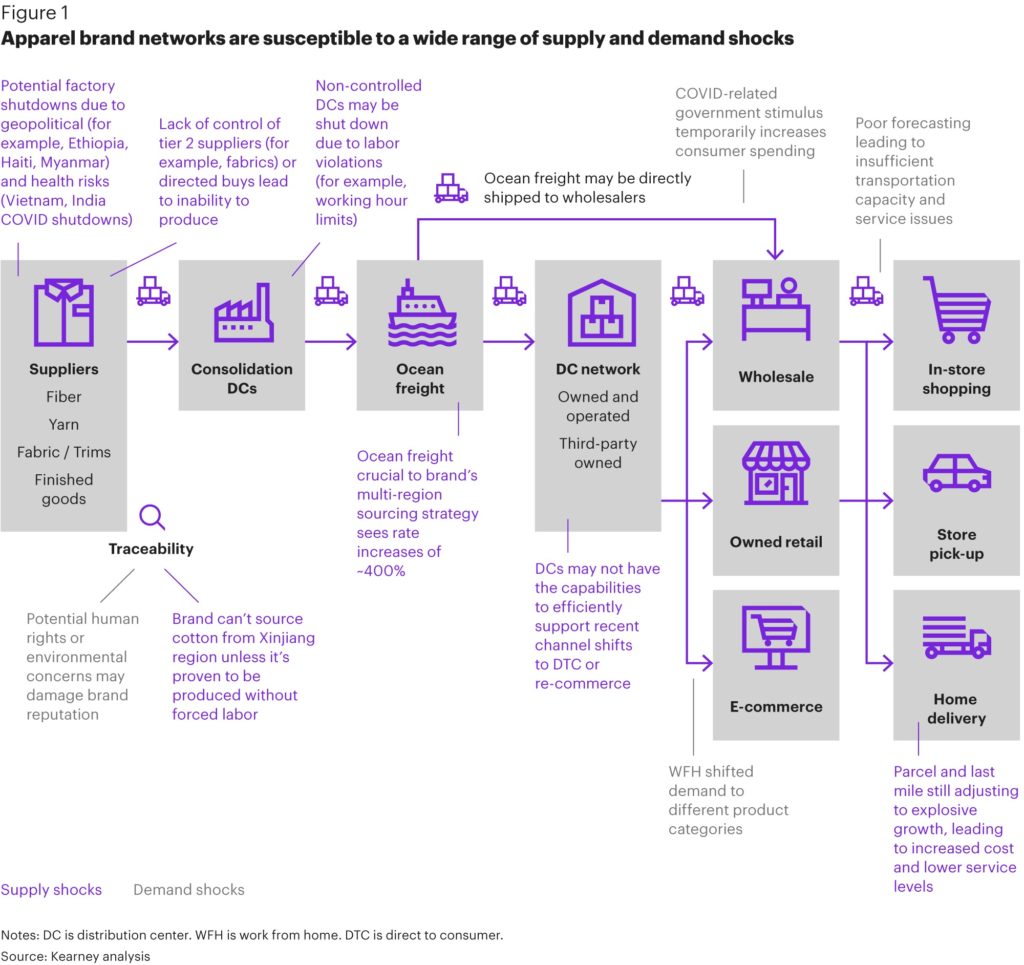New analysis by global consultancy Kearney, The Cost of COVID for North American Apparel & Retail: Time for Supply Chain Resilience, shows that continued supply chain disruptions could cost the North American apparel and footwear industry (~$400 billion total annual revenue) between $9 and $17 billion in lost EBITDA in 2022. This estimate was calculated shortly before the omicron COVID-19 variant emerged and is likely conservative.
The industry experienced significant supply disruptions in 2021, frustrating companies’ efforts to meet rebounding consumer demand. North America’s apparel and footwear industry also endured a variety of unanticipated cost increases in 2021, including the cost of cotton (up 40 percent), transpacific container shipping (300 percent), air freight (50 percent), and OTR freight (20 percent), while labor shortages drove up logistics, warehousing, and retail wages, further contributing to industry-wide spikes in COGS and G&A expense.

“Our 2022 analysis explored the industry’s vulnerability to ongoing supply disruptions and cost shocks,” explains Greg Portell, lead partner of Kearney’s Global Consumer Practice. “We benchmarked hundreds of supply chains’ preparedness to absorb unexpected challenges in ways that maintain reliability and minimize costs―a trait we call ‘resilience.’ We then calculated what lack of resilience could cost the North American apparel and footwear industry overall this year.”
“The good news is there are many practical steps companies can take to make their supply chains more resilient,” adds Brian Ehrig, a partner in Kearney’s New York office. “We suggest they start by focusing on what they can control. Immediate opportunities include complexity reduction, fresh sourcing strategies, and more rigorous alignment of inventory management with merchandising. Longer term, we see companies improving resilience via nearshoring and reshoring, to make their supply lines less vulnerable, while also building up regionalized supply chains within their existing footprint. Platforming could also have a big impact, as we often find high levels of fabric commonality and interchangeability across brands that is underleveraged. Apparel and footwear companies can use that commonality to reduce costs and flexibly prioritize within their product portfolio when disruption strikes.”





